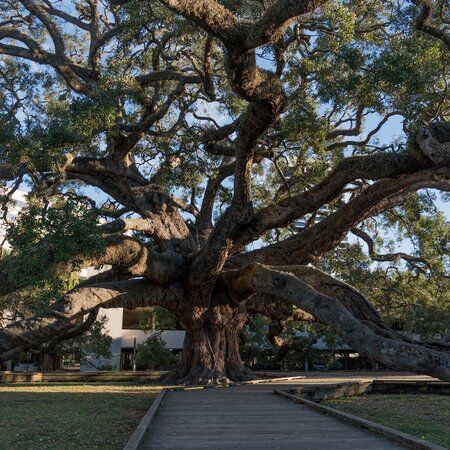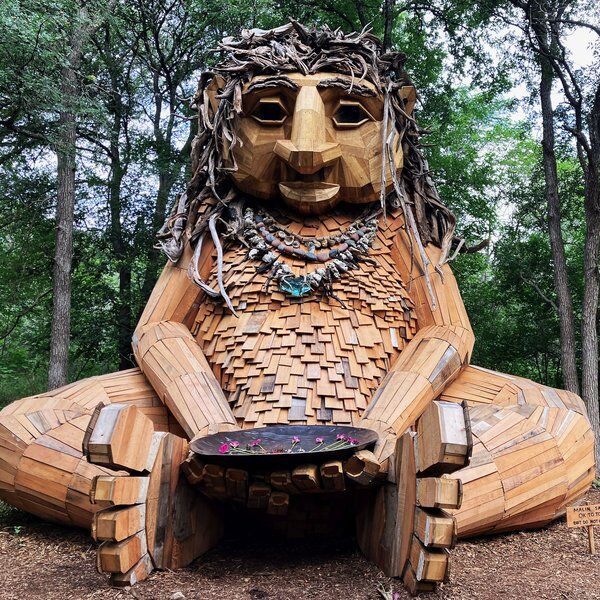
Discover Treaty Oak in Austin
“The Treaty Oak is a powerful, powerful life force.”
Believed to be around 500 years old, Treaty Oak in Austin, Texas, is the last surviving live oak tree of the Council Oaks, a sacred grove beloved by the Tejas, Apache, Comanche and Tonkawa peoples. Situated in Treaty Oak Park, near Fifth Street and Lamar Boulevard, its gnarled branches once spanned 127 feet, casting shade over war councils, religious ceremonies, and crucial negotiations between native tribes and settlers.
Despite facing challenges over the years, including a malicious poisoning in 1989, where scientists discovered enough herbicide to kill 100 trees within its veins, Treaty Oak has endured. Today, it is a cherished landmark in downtown Austin.

Legendary Tales about the Treaty Oak
According to Native American legend, the Council Oaks, where Treaty Oak stands, was a sacred meeting place. But there are other legends concerning the Treaty Oak, such as Hasinai women creating a "love tea" from its leaves, believing that if consumed under a full moon, it would ensure their lovers' fidelity and safe return from war.
Local folklore also intertwines the Treaty Oak with the early Texas pioneer era. Although there is no historical documentation to support it, stories claim that Stephen F. Austin, the “Father of Texas,” met with Native Americans under this tree to negotiate and sign Texas's first boundary treaty in the 1830s. Another tale suggests that Sam Houston, after being deposed as Governor of Texas during the Civil War, contemplated his future beneath the live oak.

Initial Conservation Efforts
As Austin grew, many of the Council Oaks were lost to development, leaving the Treaty Oak as the last remaining tree by 1927. The American Forestry Association recognised its value and declared it “the most perfect specimen” of a North American tree, inducting it into its Hall of Fame in Washington D.C..
In the late 19th and early 20th century the oak tree was situated on the Caldwell family’s land. In 1937, the Treaty Oak faced the threat of removal by the widow of W.H. Caldwell, who was unable to afford property taxes, and put the land up for sale. However, concerned citizens rallied to save it, and the City of Austin eventually purchased the tree, for $1,000, turning the site into a city park. A group of Campfire Girls from Port Arthur, Texas, were among the first to contribute toward the fund to save the tree.
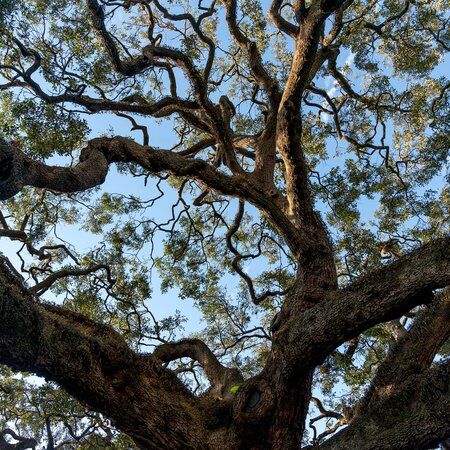
The Poisoning of Treaty Oak
Tragedy struck the Treaty Oak on Texas Independence Day, 2nd March 1989. John Giedraitis, the city forester, noticed dead grass and sick leaves around the tree. Lab tests confirmed the presence of Velpar, a powerful herbicide, in the soil and tree tissues.
Community Response
The poisoning shocked the community and drew national attention, with media coverage from major networks and newspapers. Treaty Oak became a pilgrimage site, attracting thousands of people who came to show support of the tree’s recovery. Children from across the country sent homemade "Get Well" cards, which were hung on the fence surrounding the tree. Visitors also left cans of chicken soup—if you know you know—Maalox, candles, and even crystals around the tree.
Spiritual Healing for Treaty Oak
The Dalai Lama's monks performed traditional chants, psychics claimed to sense the spirit of an ancient Egyptian queen, a Korean evangelical church held a service, a Native American group conducted a private ritual, and a Baptist group offered prayers. Even a group of witches travelled from Dallas to perform their own rites.
Saving Treaty Oak: The Blank Cheque
The campaign to save the Treaty Oak became a massive community effort. Texas billionaire H. Ross Perot wrote a blank cheque to fund the rescue operations. The city's arborist team employed numerous strategies, including injecting the tree with salt to flush out the poison, applying sugar to its root zone, replacing the surrounding soil, and installing a misting system to provide the tree with spring water. Despite their best efforts, large sections of the tree had to be amputated and about two-thirds of its limbs could not be saved.
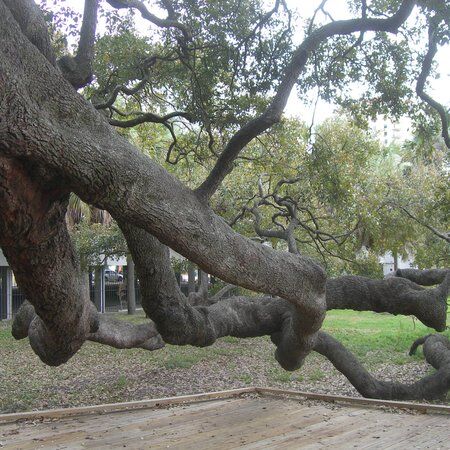
Investigating the Poisoning of Treaty Oak
Austin Police Detective John Jones was assigned the Treaty Oak case. Initially, the investigation was seen as a joke by his colleagues, but it soon grew into a serious and high-profile investigation.
The case received media coverage worldwide, with Jones fielding calls from as far away as Tokyo and England. The investigation intensified after DuPont, the herbicide manufacturer, offered a $10,000 reward for information leading to the capture of the perpetrator.
The breakthrough came when Cindy Blanco, an acquaintance of Paul Stedman Cullen, approached the police. Cullen, who had a history of mental health issues and a prior conviction, had bragged to Blanco about poisoning the tree after misinterpreting an old legend—Cullen wished to cast a spell to end his unrequited love.
Blanco agreed to wear a wire and recorded Cullen confessing to the crime. This evidence led to Cullen's arrest and conviction. He was sentenced to nine years in prison but served only three before his release.
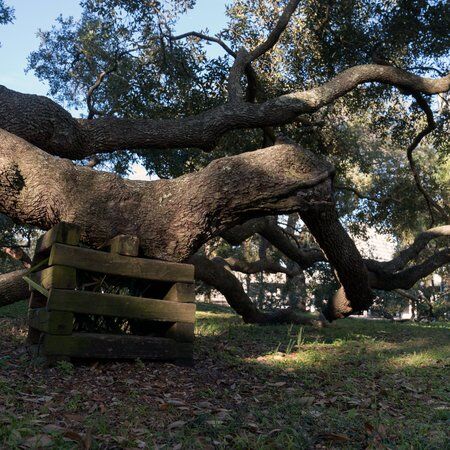
Treaty Oak: Defying all Odds
“It survives because it follows the rules of nature, and it’s good … it just gives and gives and gives, it never takes anything back again.”
Even though two-thirds of the tree had died and more than half of its crown had been pruned, their efforts eventually paid off and in 1997, Treaty Oak began producing acorns once more. City workers gathered these acorns, germinating them and distributing the seedlings throughout Texas and beyond.
“Everybody wrote that thing off … almost 30 years later, that tree is doing better than it was when I first saw it in 1985.”
Today, despite being lopsided due to the damage it endured, Treaty Oak has many plantings across the United States, including one sapling that stands proudly on the plaza of Austin City Hall.
But what was to be done with the damaged wood?
Artists and woodworkers were invited to create items from the pruned wood, transforming the fallen limbs into works of art. These included recreations of Sam Houston's chair, 600 pens, gavels, statuettes, and even framed paintings. One pen was gifted to then-Governor George W. Bush.
The sale of these items raised approximately $250,000 to plant new trees. Michael Embesi, a community tree preservation manager, recalls the collective effort to save the tree and highlights how it inspired the first tree protection ordinance in the country, passed in Austin in 1983. This ordinance paved the way for similar programs nationwide.
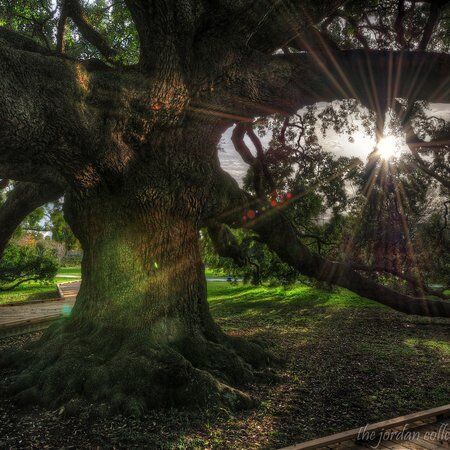
Treaty Oak Today
"It’s like immortal! It’s like 500 or 600 years old; it’s like it’s new again!”
Against all odds, the Treaty Oak began to recover. Over the past three decades, it has continued to grow, with its remaining third flourishing in the face of adversity.
"Go up there and touch the tree. Touch something that’s 600 years old and alive. Bring a picnic, bring your kids. Let ’em climb on the limbs and jump up and down on it. The tree will love it if you come visit."
The tree's story of survival has now become another part of its legend. Today, visitors are encouraged to come and experience Treaty Oak, a piece of living history.
Interested in finding more places like this? Try one of our CityDays Exploration Games - untangle cryptic clues as a team, as you are taken on a journey to the most unique, unusual and bizarre corners of Austin and beyond.
